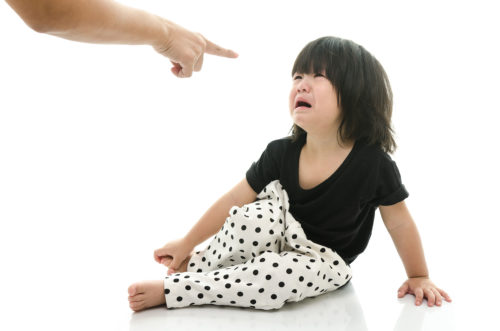
For some light(!) summer reading, I picked up a copy of psychologist Curt Thompson’s book The Soul of Shame and blew threw it about a week or so ago. Thompson’s book is a remarkable look into the overlap of brain structure, psychology, and Christian spirituality. He outlines how shame functions in the structures of the brain and how the great cure for shame, vulnerability, is available to Christians in a way that the rest of the world doesn’t readily access.
The passage below (p. 64ff) stood out for its overtones of law/gospel theology, how healthy brain development for children prioritizes joy and parental attachment over correction and the use of shame. I also appreciated the passage because it outlines how shame is the product of relationships built around law instead of gospel, creating a “shearing” effect that isolates us from others and shuts down brain function. Law without gospel creates shame, and gospel without law allows children to fall down the stairs. Both are needed for a flourishing and healthy psyche.

When a toddler is first being introduced to limits and hears Mom say “No!” she is activating the child’s parasympathetic system, helping it apply the brake to his or her sympathetic system’s engagement with running toward the stairs or, for that matter, engaging in any behavior that is legitimately unacceptable, impulsive or potentially relationally threatening. In these cases, shame is to be equated with the emerging neurophysiologic response that every child must integrate in order to develop self-regulatory capacity. When Mom says “No!” the toddler does not necessarily understand the literal, abstract meaning of no — the brain is not yet well-developed enough for this. The child responds mostly to the tone of her voice, given that at this point a toddler’s right hemisphere is still largely running the mind’s show. The child is simply doing what his or her brain wants to do, blissfully unaware of any danger. Upon hearing Mom’s voice, he or she may feel a sudden, minor discomfort accompanied by feeling startled, along with blushing. In these moments, when the parent is attuned to the child’s emotional responses, “no” is delivered in an attuned manner, even in what seems to be a somewhat urgent situation, with nonverbal cues that balance the message with firmness while maintaining relational connection. Hearing the sharpness in her voice, which interrupts the child’s movement, he or she next hears it soften as Mom says, “Let’s go this way!” quickly moving physically to redirect the child elsewhere. Joy is not at risk of being undermined, even in the instance of limit-setting, when a parent’s mind is attuned to maintaining connection to the child.

When shame strikes, however, the interchange is wholly different. It often occurs when we are moving in a direction of creative exploration, minding our own business, when an unexpected force of nature enters and brutally throws us off course. Crucial in this drama is our state of mind, which typically is one of unsuspecting, trusting anticipation as we venture forward in some endeavor. We are simply doing what we joyfully — or at the very least unconcernedly — intend to be doing, such as coloring or running through the house or throwing a baseball near windows or asking for a new bike or writing a report for the supervisor or entering a romantic relationship or taking a risk investing money or choosing to believe in Jesus. Creative adventure has no age limits.
Or, in Jackie’s case, when she hopefully asked her mother if she could invite some of her classmates over to her house to play. Suddenly, out of the blue comes the unexpected shearing effect of shame. When her mother answers irritably, “No! How many times have I told you we can’t do that?” there is a certain shearing off of joyful anticipation, a blindsiding that overtakes her and catches her completely off-guard. There is no clutch involved in the application of the break of the parasympathetic system to the sympathetic system’s energy, no gradual or mindful engagement while attempting to change the direction of her intended course (asking for friends to come to her house). Her arousal is precipitously unhinged, like so many colliding railway cars piling up behind the mind’s engine as it has come to a screeching halt.
With this truncation of a person’s creative movement, there ensues for her a series of physiologic events, including a lowering and turning away of her gaze, a heaviness in her chest, an uncomfortable fullness in her head, a wave of an intensified blushing effect that courses over her entire body, and a turning in toward herself and away from others. In terms of mental processes, the distinct feeling of shame, one we all know but sometimes find hard to put into words, quickly arises. A deep sense of self-consciousness emerges; cognition becomes fuzzy as our thoughts are disabled; words may be hard to find (if we are old enough to form them); and the mind becomes caught in a vortex of images, sensations and thoughts that recycle and feed on each other at light speed, reinforcing the experience. It becomes difficult to imagine a way to halt the internal state of affairs, feeling trapped in a mind-body maze of emotional nausea. Usually, this state will persist until we are able to extricate ourselves from the situation, the circumstances passes, or someone acts in such a way to intervene on our behalf.

COMMENTS
One response to “The Shearing Effect of Shaming Children”
Leave a Reply













I read this book in Feb! I am SO glad to see it getting air time on MBird. I highly recommend his other book as well!